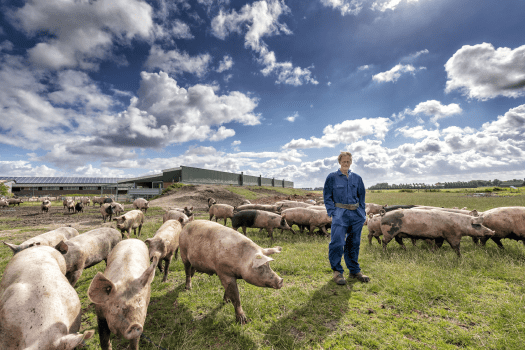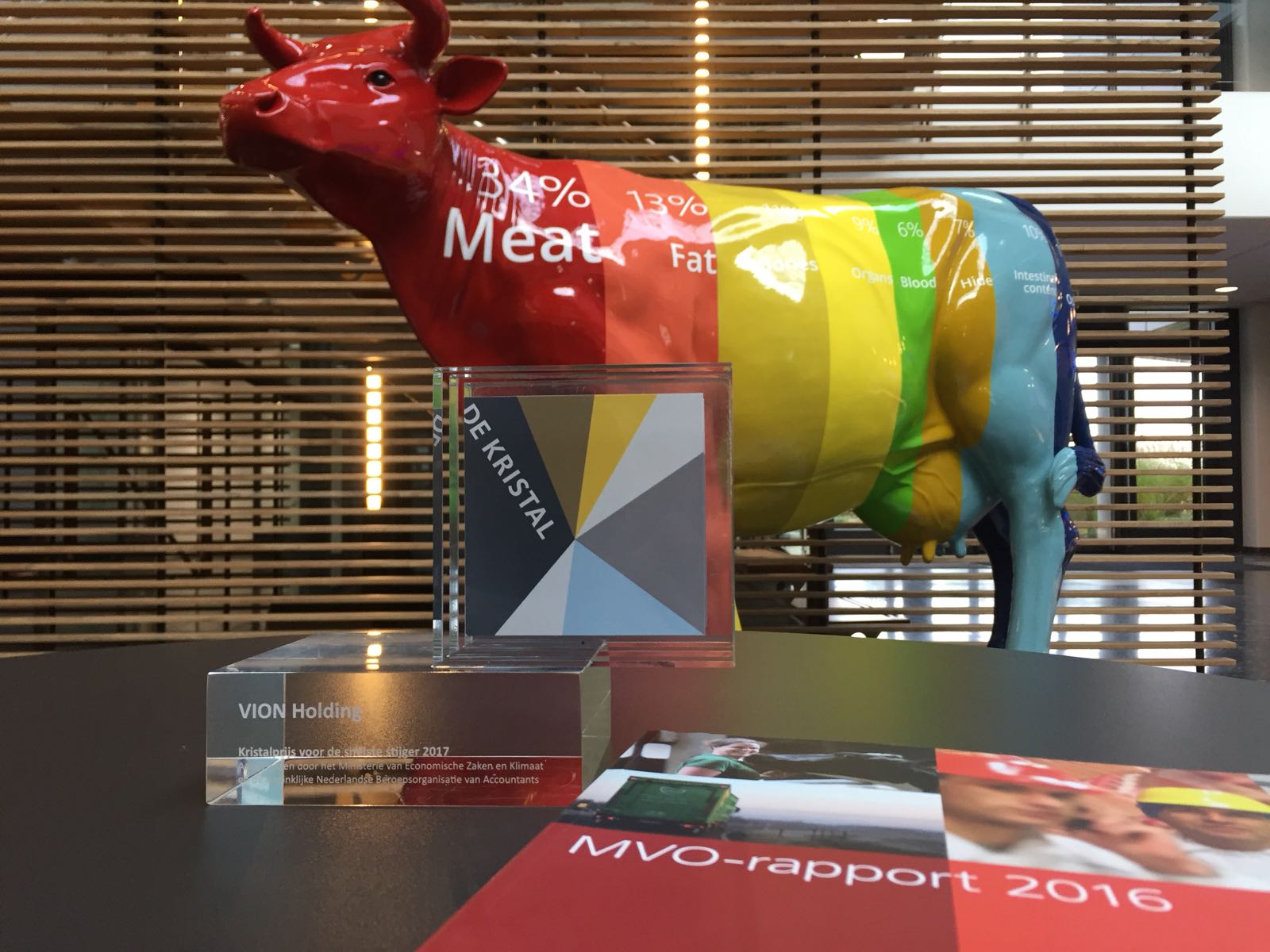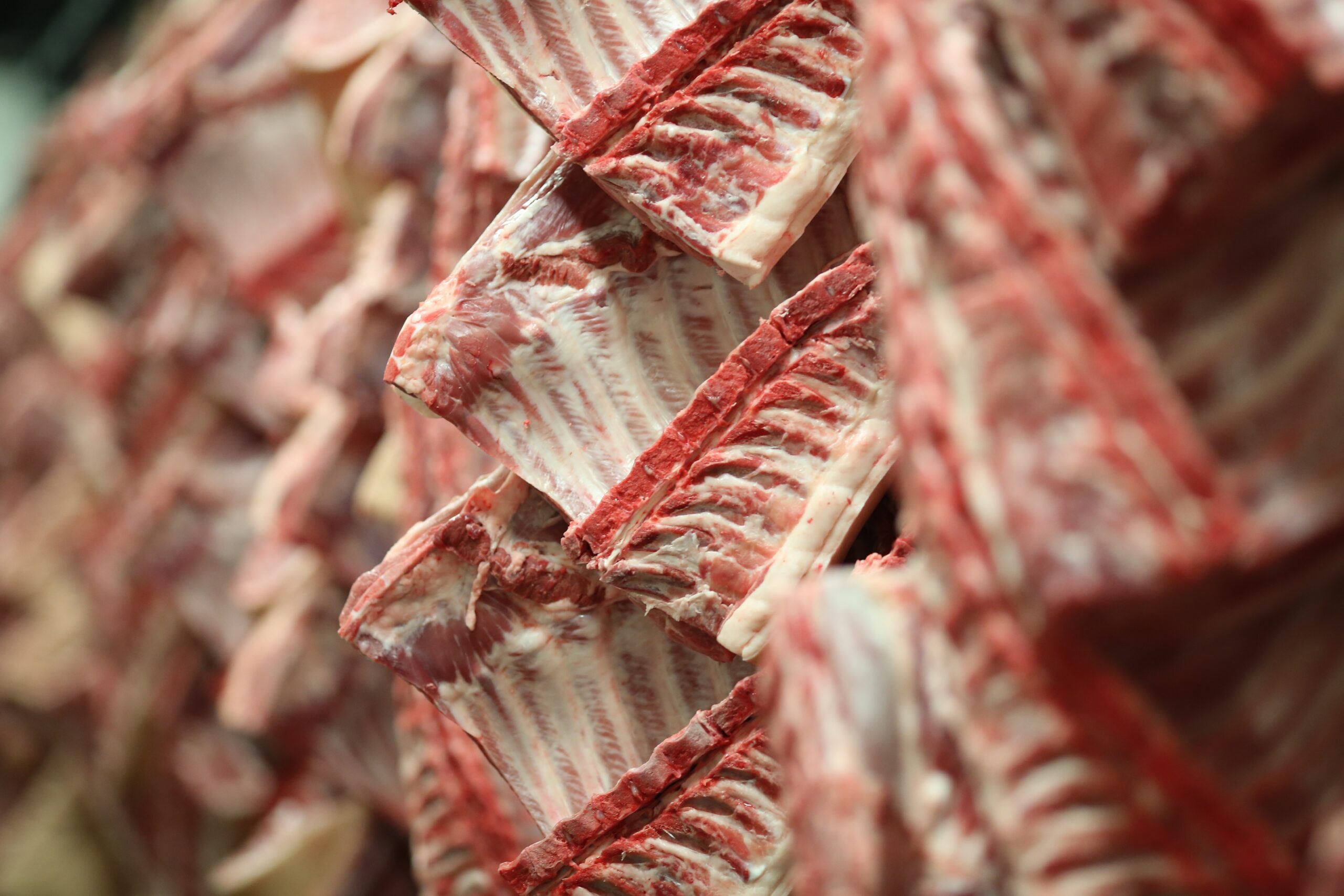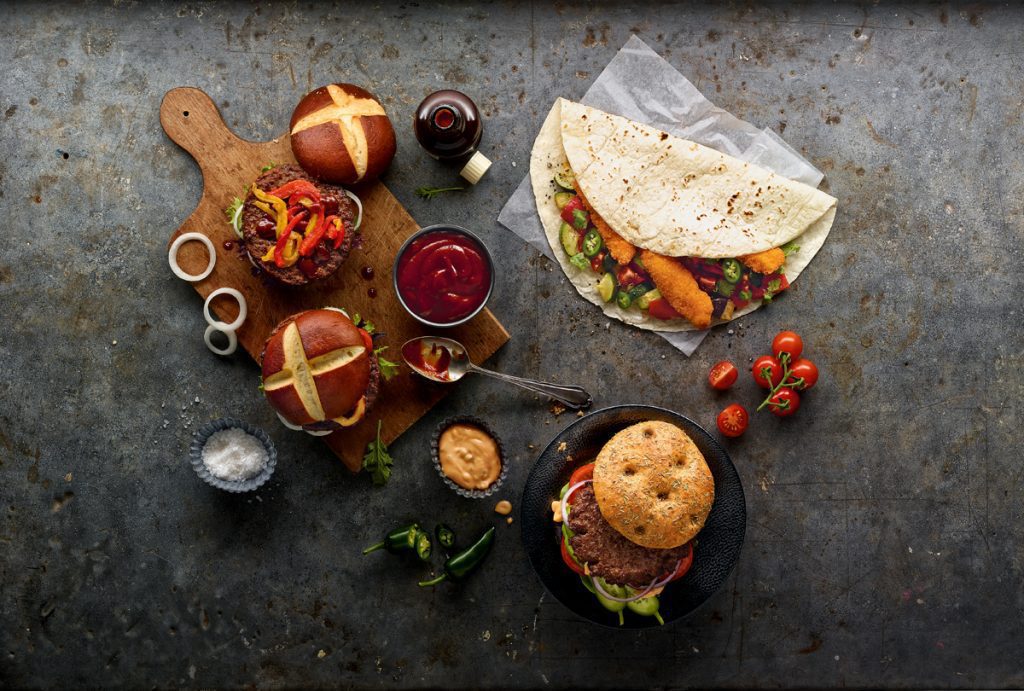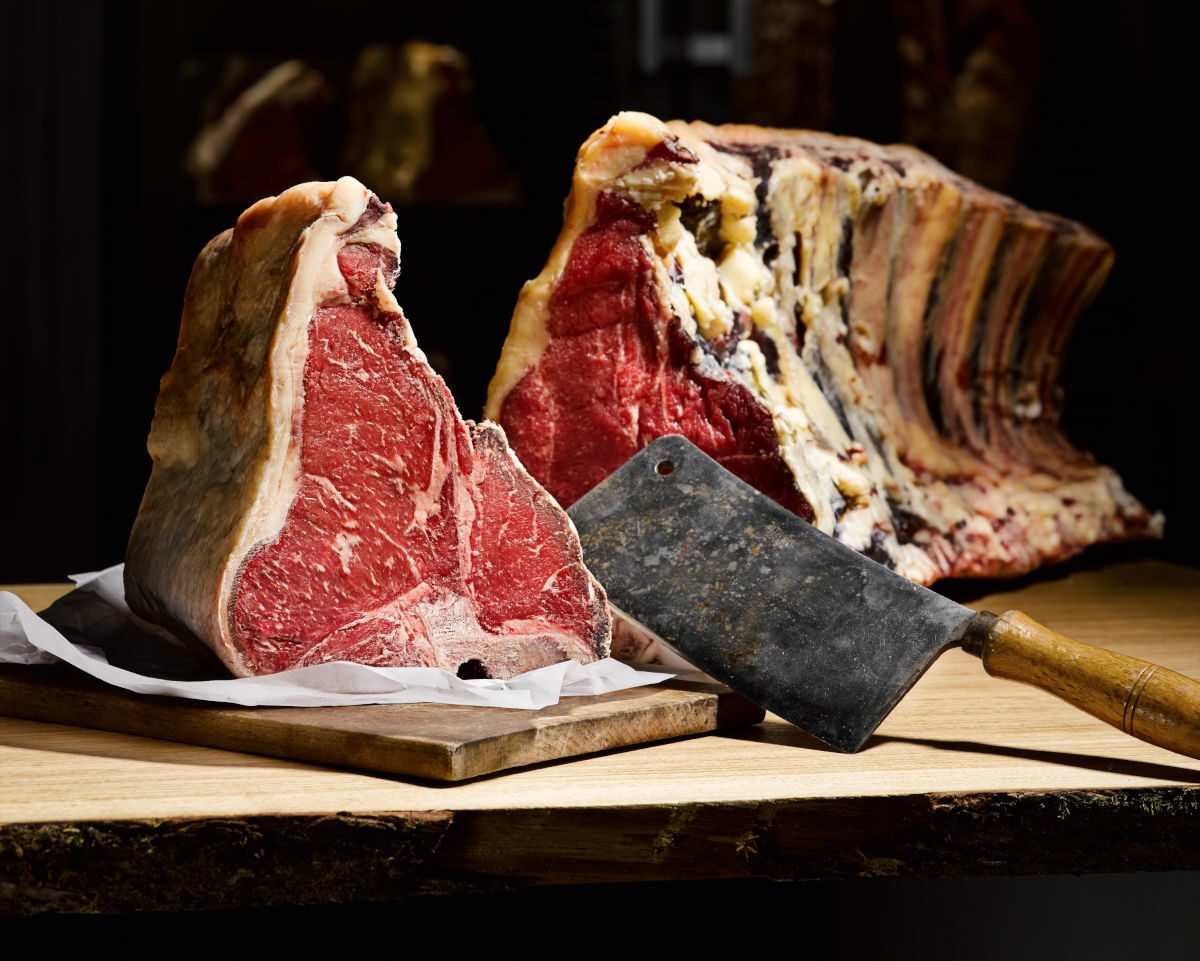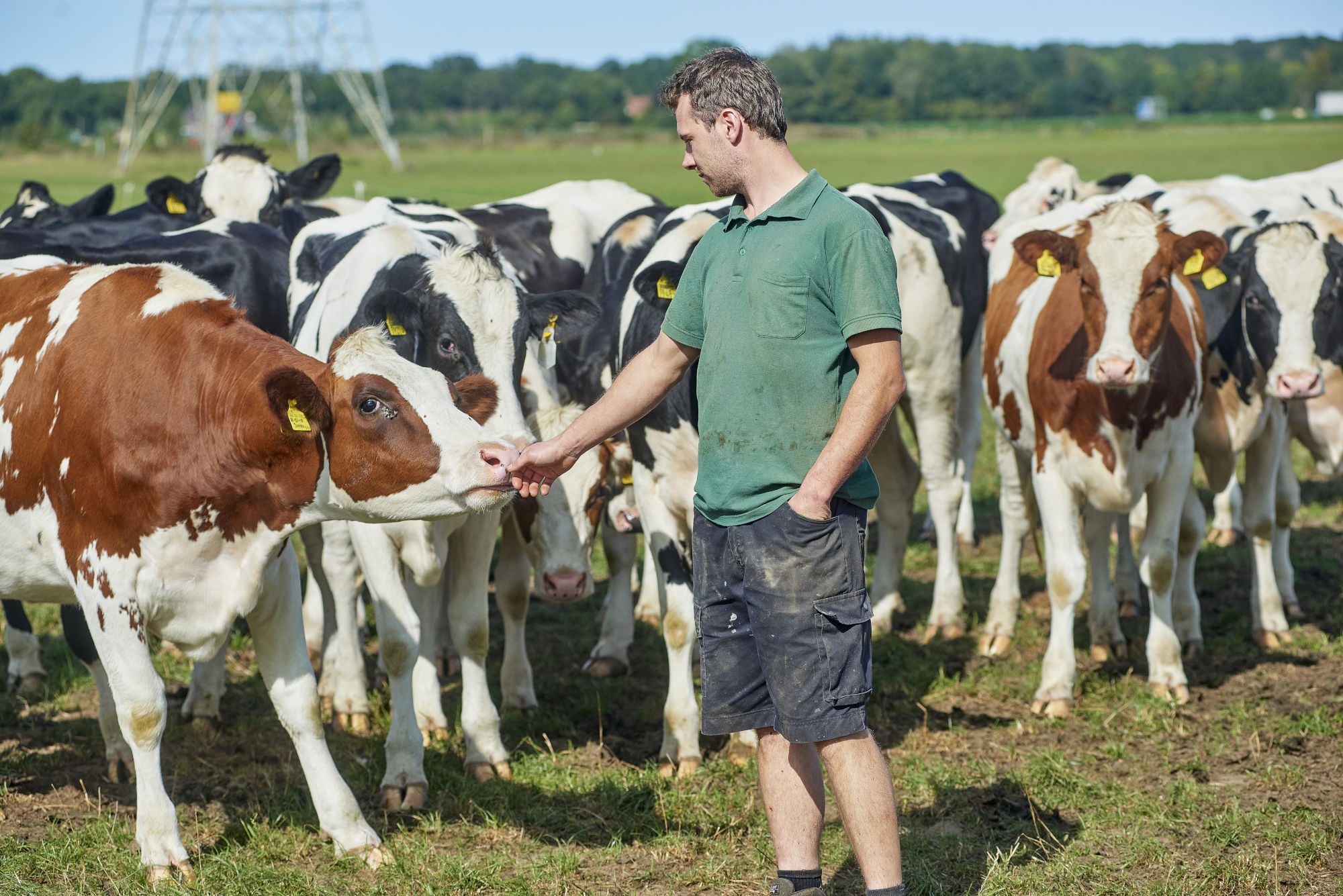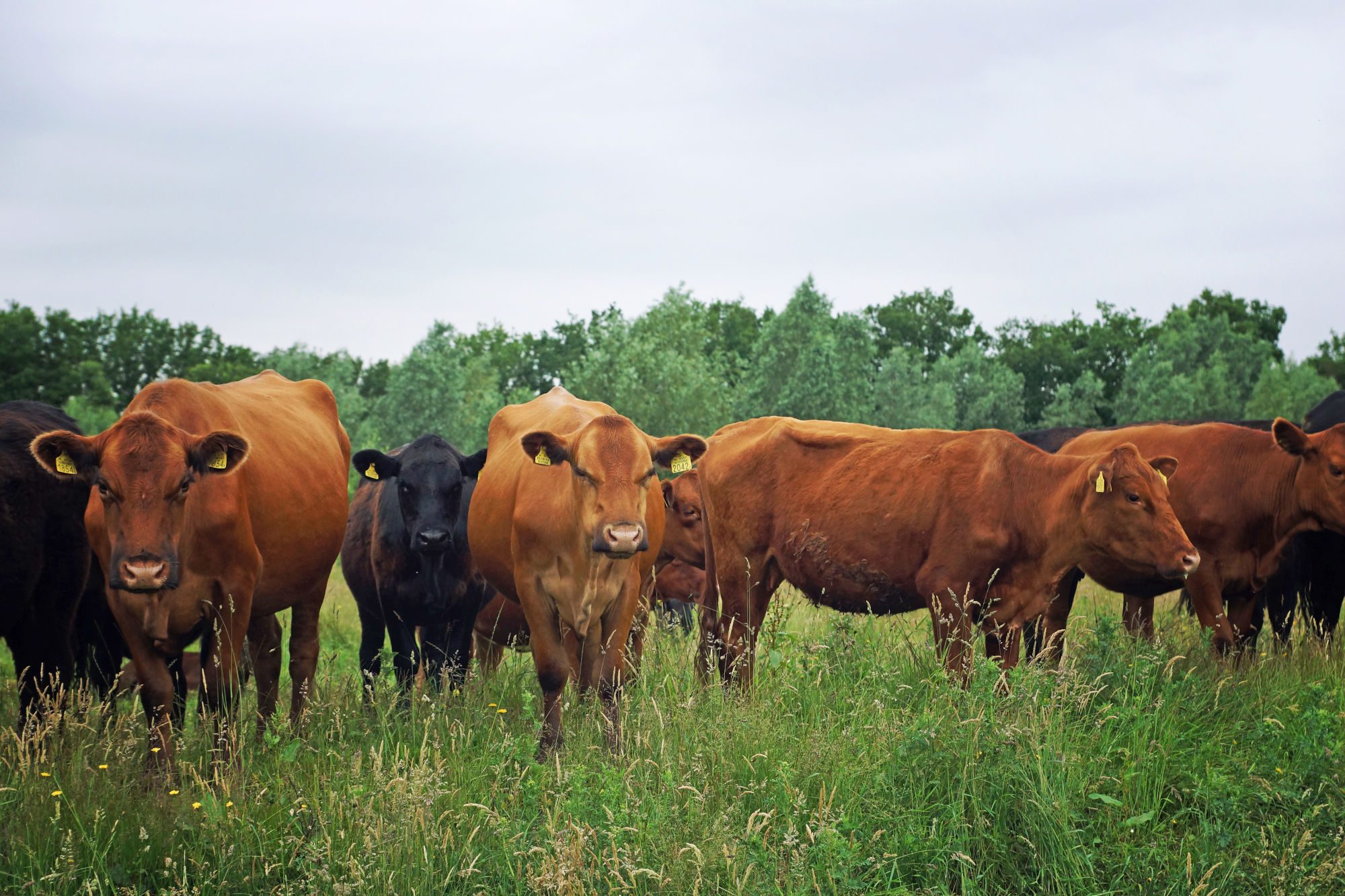From the animal’s perspective: innovative training courses with virtual cow or pig glasses
After Vion became the first slaughterhouse to use VR “cow goggles”, developed by the Agricultural Training Centre (LBZ) and C.O.M. Wetzlar, to improve animal welfare, the virtual “pig goggles” will follow from spring 2024. Software has been created that imitates the way pigs’ eyes work and transfers this to virtual “glasses”. This allows users of the glasses to experience their surroundings from the perspective of a pig. Vion uses the innovative glasses to train employees and animal welfare officers and to optimise construction measures in slaughterhouses.
At Vion, animal welfare is an integral part of our corporate strategy and we utilise new technologies and scientific findings to continuously drive this forward. Such as the “virtual” cow goggles, which we were the first company to test in 2021 and use to train our employees and animal welfare officers and to optimise construction measures in the slaughterhouse barns. Now comes a new development, the counterpart for pigs’ eyes. Wearing the goggles allows users to experience their surroundings from the animal’s perspective.
“Anyone who has ever experienced for themselves how a cow or horse perceives its environment can understand the animals better and deal with them better. By using the simulator, people’s perception of animals can be changed, stall systems can be optimised for animal welfare and people can be better taught how to perceive animals. This strengthens animal welfare,” says Peter Menzel, developer of the VR cow goggles (C.O.M). The innovative goggles can also be used to optimise the animals’ movements, such as the drive for stunning. Appropriate structural measures can help to support independent forward movement in the group and utilise the animals’ herd instinct.
The virtual cow glasses were developed by the Agricultural Training Centre (LBZ Echem) and C.O.M. GmbH Wetzlar. Software imitates the way animal eyes work and transfers this to virtual “glasses”. In virtual reality, for example, you can see that cattle have a field of vision of approx. 330° degrees and cannot see anything behind them. In addition, they can only see clearly in the front area and react much more slowly to changes in brightness than humans. Only when the bovine eye has adapted does the animal move forward.
